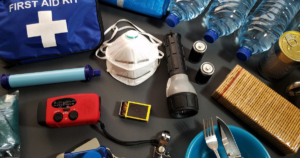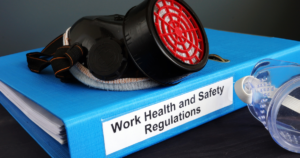Physical Address
304 North Cardinal St.
Dorchester Center, MA 02124
Physical Address
304 North Cardinal St.
Dorchester Center, MA 02124

Accidents at work are regrettable events that require prompt and thorough responses from employers. A clear division of duties is essential in the wake of such events to guarantee the security, welfare, and full recuperation of the impacted staff members. This article addresses twelve essential duties that employers must fulfill following an accident at work, offering guidance on navigating the complexities of post-incident management.

After an accident, the initial time is very critical. First aid should be immediately given. Along with that, employers should make sure workers receive attention. It will show the employer’s concerns and dedication towards workers. This entails assigning qualified first aid responders and keeping fully stocked first aid kits stationed across the office.
For a comprehensive analysis of events accurate reporting and documentation is important. Employers should understand the value of thorough documentation in addition to establishing clear reporting. This documentation is useful for future safety assessments in addition to helping with compliance. A confidential reporting system can also help to encourage staff members to voice issues and observations without worrying about retaliation.
For impacted employees to feel reassured and supported, open communication is crucial. After addressing the incident, employers should continue to communicate with staff members to let them know how things are going and to make sure they feel heard. Providing counseling and other forms of support highlights a company’s dedication to employee welfare. Frequent town hall gatherings or forums can also offer a forum for candid conversations about safety-related issues.
Investigating the accident’s causes is essential to preventing a recurrence. Deep exploration and root cause analysis shed light on systemic problems. Employers ought to involve workers in this process by promoting observation sharing and fostering a cooperative safety culture. Regular safety audits that involve staff members help to spot possible risks before they become serious incidents.

Adherence to health and safety protocols is not only mandated by law but also a fundamental aspect of conscientious business conduct. Companies should conduct routine audits of their safety procedures to make sure they are in compliance with the law and to identify any gaps early on. This pledge upholds confidence and trust in the workplace. Frequent external audits by impartial safety specialists can guarantee thorough compliance and offer insightful information.
To prevent and avoid mishaps in the future it is important to promptly implement corrective measures in response to the results of the investigations. Employers ought to go beyond simple compliance and make an investment in ongoing development by putting preventive measures in place. This dedication helps to foster an environment at work where learning from mistakes is valued. Creating a safety committee with workers from different departments improves team problem-solving and safety initiative execution.
Effective coordination with emergency services is critical in cases of serious accidents. To guarantee a well-coordinated response, employers should establish open lines of communication with the local emergency responders and hold drills regularly. This preparedness improves overall emergency preparedness and reduces potential delays. Establishing an emergency response team within the company guarantees a prompt and well-prepared response in dire circumstances.
Understanding and claiming insurance and compensation processes can be challenging for affected people. To guarantee a seamless and prompt resolution, employers should offer direction and support throughout this process. A dedication to the well-being of employees is demonstrated by clear communication about benefits that are available and help in navigating bureaucratic procedures. Employers can also provide extra financial or medical assistance above and beyond what is required by law showing a caring attitude towards employees.
Encouraging everyone to get back to work is complex work. For this, employers need to make each employee’s return to work individually, considering their individual needs. Encouraging a supportive work environment during recovery involves providing the required accommodations and support services. Offering employees the chance to receive cross-training to gain new skills guarantees a seamless transition and promotes ongoing professional growth of employees.

Employers’ duty does not end with taking care after the accident. A dynamic safety approach is done by routinely reviewing and evaluating safety procedures, holding training sessions, and taking feedback from the staff members. This will help to check with new risks and make sure that industry best practices are taken into account. Encouraging workers and asking for their suggestions in safety innovation projects promotes a shared sense of accountability and inventiveness in improving workplace safety.
In conclusion, work accidents are lamentable and can happen anywhere. Employers must take a comprehensive approach to manage the fallout from a workplace accident. Businesses can satisfy their legal requirements and establish a workplace environment that puts employees’ safety first and also thinks about communication and the general well-being of employees. This will not only help to prompt recuperation but also lays the groundwork for long-term workplace security and staff confidence.
References